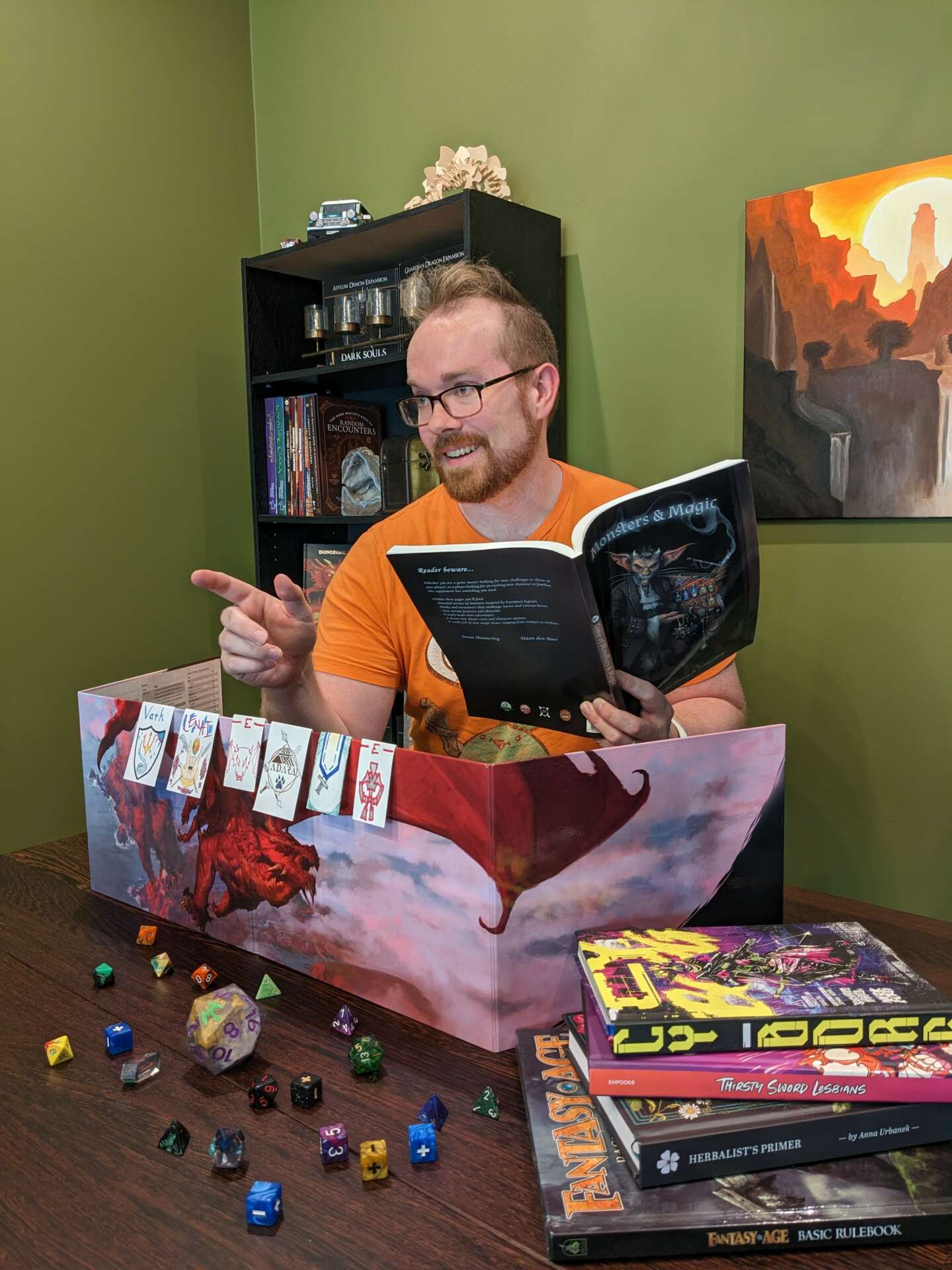We’re excited to introduce you to the always interesting and insightful Matt Best. We hope you’ll enjoy our conversation with Matt below.
Hi Matt, thanks for joining us today. Let’s jump to the end – what do you want to be remembered for?
Day 20’s mission is to transform the hobby of tabletop roleplaying games by combining its past with its present to form a more inclusive, novel, and celebratory future.
Between pop-culture references like Stranger Things and the explosive growth of “nerd culture”, Dungeons & Dragons has become a household name. More people than ever before are looking at tabletop roleplaying games (TTRPGs) with curiosity, but these games are by no means new. TTRPGs have been around since the 1970s, with their wargaming predecessors going back even further. That’s over 50 years of friends gathering around their basement or dining room tables to tell stories using nothing but dice and their imaginations.
But TTRPG systems, stories, and even communities have not always been welcoming to all. That has begun to change in recent years with more BIMPoC, LGBTQ+, and other marginalized people getting a chance to tell their stories. That’s a great thing, and we want to be a part of that revolution! This game is better when more people can feel empowered to bring their stories, viewpoints, and ideas to the table. Whether it’s our collaborators, characters, plots, or mechanics, we want to make sure everyone can find themselves in the stories we create while also enjoying exciting new gameplay concepts.
At the same time we want to honor the good parts of TTRPG history. There are decades of amazing stories, themes, and mechanics to pull from and bring into this new era of tabletop gaming; revitalizing gaming history, if you will. There should absolutely be games focused entirely on roleplaying, but that doesn’t mean that there shouldn’t be any more dungeon crawls. In fact, we think there’s a lot more good to be done combining those seemingly opposing styles of play. Let’s keep all those clever traps and crazy exploration moments that make the dungeon crawls of yesteryear iconic while disposing of the at-best boring, at-worst problematic cast of characters used to populate those dungeons. We can tell complex narratives while still delivering the “loot the room” feeling of these classic adventures, all while elevating stories and perspectives you won’t find in most published adventures. This “best of all” design mentality fuels our projects across all our different products, not just those made for Dungeons & Dragons.
Day 20 started with the goal of transforming Dungeons & Dragons so these big, epic campaigns could be more accessible to more people. But we’ve pushed past that goal and are hoping to leave our mark on the industry in a bigger way: combining traditional gameplay with contemporary sensibilities to forge a brighter future for TTRPGs.
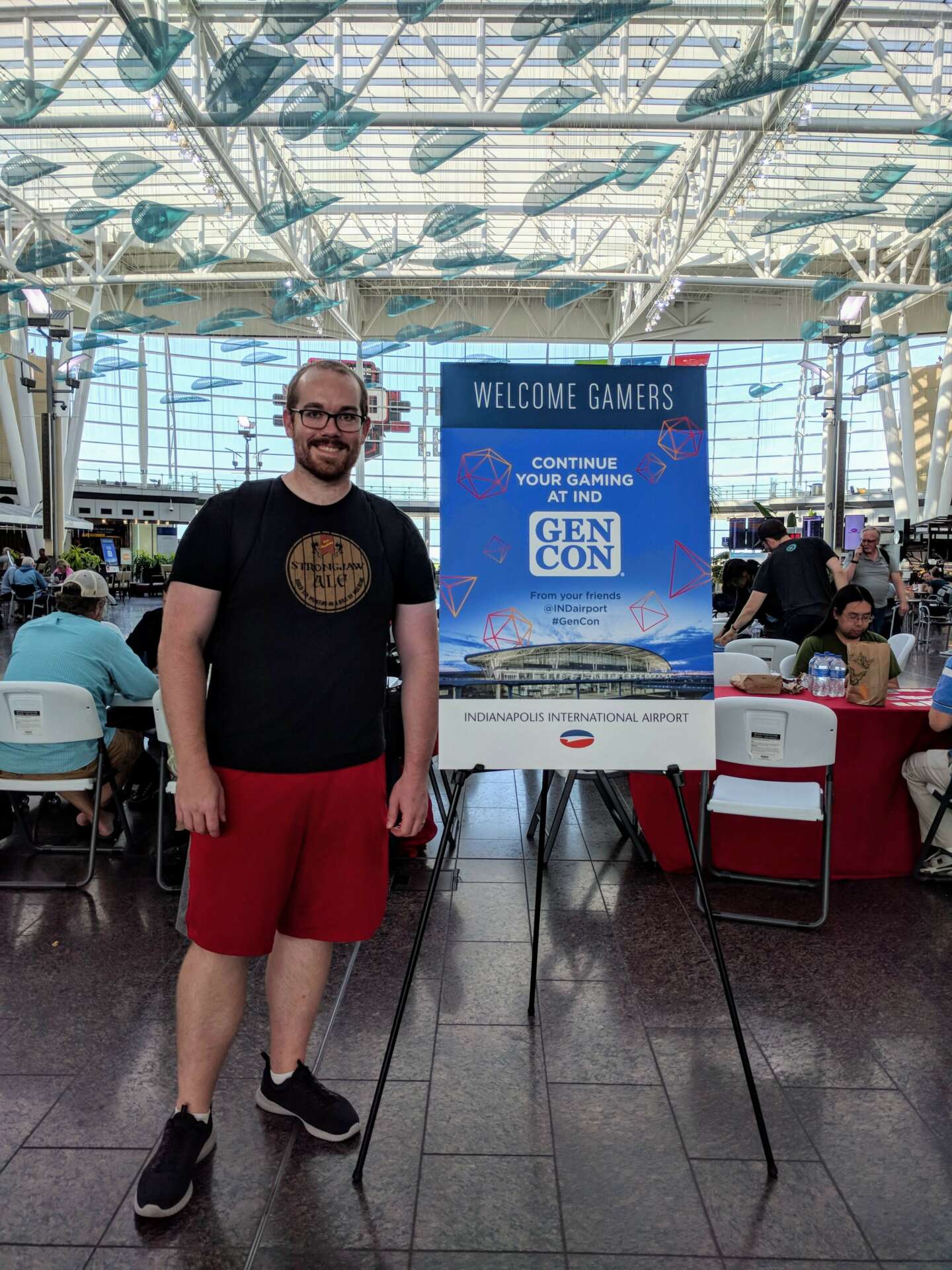
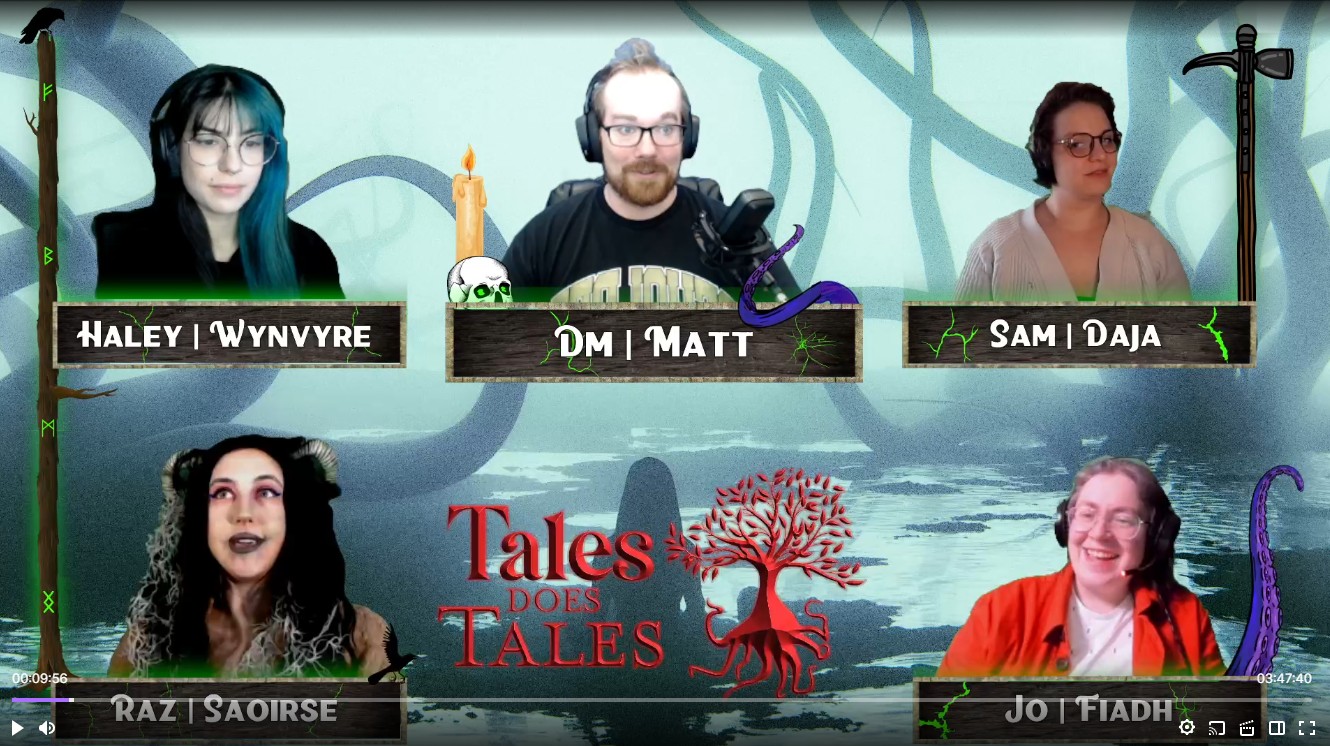
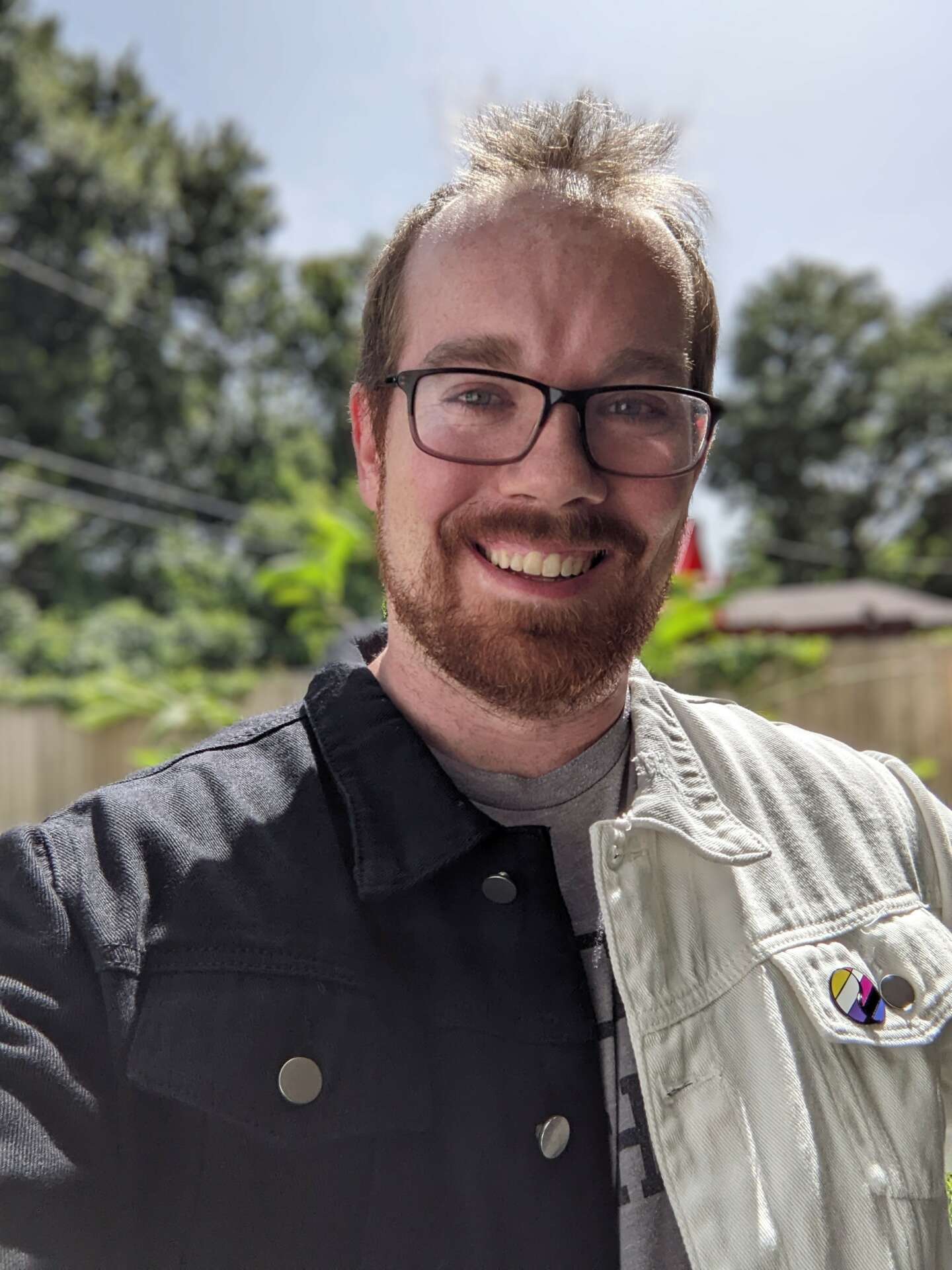
Great, appreciate you sharing that with us. Before we ask you to share more of your insights, can you take a moment to introduce yourself and how you got to where you are today to our readers
Day 20 started when a college friend and I were ruminating on our D&D home game. We’d been playing for several years and the campaign was getting pretty high level. We were celebrating our group’s good fortune in being able to maintain a weekly campaign for so long, and we realized how few people actually get to enjoy all the levels of play in D&D. That observation – that core need in the TTRPG space – would be the spark that caused us to start creating our own content.
For those not familiar with Dungeons & Dragons (or TTRPGs in general), it’s a game focused on communal storytelling. The players all create characters whose actions they control as the group explores the world, overcomes challenges, and fights against the forces of darkness. Meanwhile one player, the Game Master (GM), fleshes out the world, plays the part of all the other characters in the story (including the villains), and generally guides the story that the other players want to tell. Whenever a conflict occurs or it’s uncertain how something will play out, one or multiple players roll dice to determine what happens next. Typically these games start with the player characters, or PCs, at level 1, and they gain levels as they accomplish heroic feats. As they grow in levels and power, the challenges they face will often grow more powerful as well. This progression through both story and mechanical milestones is called a “campaign”.
But sadly most campaigns will end before they should. Picture your favorite show getting canceled, leaving plot threads dangling and stories unresolved. This is often the case for D&D campaigns. People start families, move cities, change jobs, or simply lose interest as time goes on. Slowly the campaign grinds to a halt, and the players that really want to continue are left trying to pick up the pieces. With each level requiring anywhere from a handful to dozens of sessions to progress, and each session taking multiple hours of time to play, it’s extremely rare for people to experience gameplay past level 10. In a game that should theoretically go all the way to level 20, that’s a massive amount of content and fun left unexperienced for 90% or more of the game’s audience.
My friend and I would go on to take this premise – that most people didn’t get to explore the full breadth of experiences to be had in D&D – and use that desire to create something new. We wanted to streamline the D&D experience so that folks could play through great content quickly, crafting a satisfying campaign story that didn’t take nearly as much time and allowed people to experience more of the game. We set out to craft that experience in two ways:
1. Modular Adventure Scenarios. So much work is done by GMs to craft the story beats and mechanics that guide the players through each session. Some are able to supplement their own abilities by purchasing pre-written modules that have most of the work done for them, but the problem is those pre-written adventures are often designed for very specific levels of play. And if the PCs are higher or lower level by a good amount, then the adventure is either useless to you, or it needs to be heavily modified to suit your needs. We’ve solved that by creating adventures that dynamically scale the challenges, monsters, and other elements presented to match the level of the party. So when a GM is running our adventure “The Court of Seasons”, for example, they have all the information they need to run that adventure for a level 4 party. Then, if that party levels up before the adventure is done, the adventure has mechanics that scale it up so that its challenges are still a good fit for the now-more-powerful PCs. It doesn’t matter what level you’re playing at; our adventures scale to suit your needs, reducing “wasted shelf space” and unnecessary prep time.
2. A Full Campaign System. In TTRPGs there’s something called a “one shot”: a short story or adventure that is designed to be run in one (or at least very few) sessions. These are great ways to experience the game and try something new, but they don’t provide the same overarching story as a true campaign. Think of the difference between a single standalone superhero movie versus the Marvel Cinematic Universe. Both can be very enjoyable, but the latter provides a continuing narrative that allows for unique, long-running stories to be told as characters progress from puny level 1’s to the near demi-god status of level 20. But then there’s still the problem that most official campaign books – those written and published by Wizards of the Coast – don’t go above level 13. And they can still take years to complete, especially if a group wants to continue the story into higher levels. So what we’ve done is designed supplemental material that can be partnered with our existing adventures to structure them into an unified narrative. This includes everything from villains to extra story beats or specific loot that, when added to our existing adventures, makes them feel like an interconnected story. Since the adventures all scale to suit any level, you can even arrange the pieces in any order you want.
We are still actively developing the Day 20 Campaign System and will be releasing it once we have our initial crop of adventures published. We are a small team and this is still very much a passion project for us, but with each bit of content we release we get one step closer to that full system being unleashed!
We’ve also begun branching out into other systems, bringing our unique spin on game design to indie games like Thirsty Sword Lesbians and CY_BORG – both personal favorites of mine. So far we’ve been focused on smaller content releases for those, but as the Day 20 Campaign System for D&D 5th Edition grows closer to completion, we are identifying ways we can bring that same style of “epic campaigns made easy” to these other systems.
Any resources you can share with us that might be helpful to other creatives?
Artwork has always been a huge struggle for us. It’s one thing to have a cool story or compelling gameplay mechanics, but as we try and reach a broader audience we need to meet the expectations of our customers who are looking for polish and professionalism with art and layout. It’s not enough for a bit of content to be good mechanically or narratively. It also needs to look good.
As we’ve scaled up we’ve experimented with a lot of different strategies. We’ve worked with artists directly to commission pieces, utilized existing stock art, and even tried AI artwork. Artists allow the greatest customization, but there are heavy costs, both financial and time. As a smaller creator we can’t afford to create new pieces for each bit of content we produce, and collaborating with artists often requires a flexible timeline. Stock art might work, but we’re often looking for fairly niche aesthetics that aren’t represented in traditional stock art collections. We thought AI art might offer a true win-win between customization, affordability, and predictability, but there are ethical concerns with AI art that leave us hesitant.
Fortunately we’ve slowly built up a catalog of other resources that make our work possible. Art collections that are part of the public domain are often posted online, like the Rijksmuseum’s Rijks Studio website. Other TTRPG creators directed us to better stock image and logo resources like Pexels and The Noun Project, both of which focus on a wider diversity of images that can better meet our needs. With a little creativity and some self-learning in Photopea and Affinity, we’re now well on our way to nailing the intended “look and feel” we’ve been after since the beginning.
Obviously these tools are no replacement for artists when it comes to truly custom artwork or layout, but they are able to meet a need we have as a small company trying to bring our dreams to life in a financially responsible way. When projects hit big, we make sure to earmark some of those profits to work with artists and make the next creation that much better. But if there’s one thing we know now that we wish we’d known back then, it’s the wealth of cheap, effective art options that exist. That would have allowed us to hit the ground running without feeling like we needed to relearn our art & layout strategy with each release.
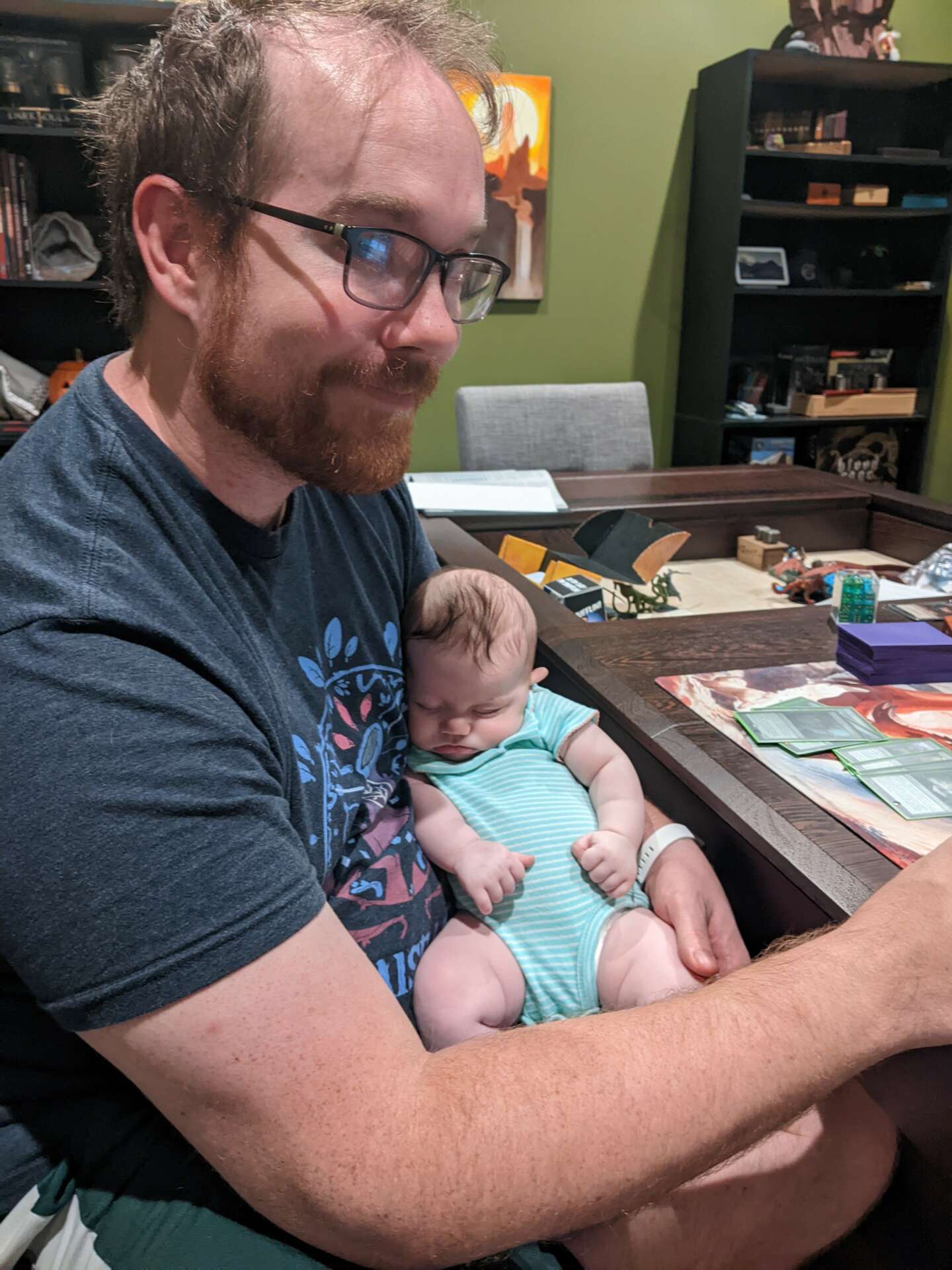
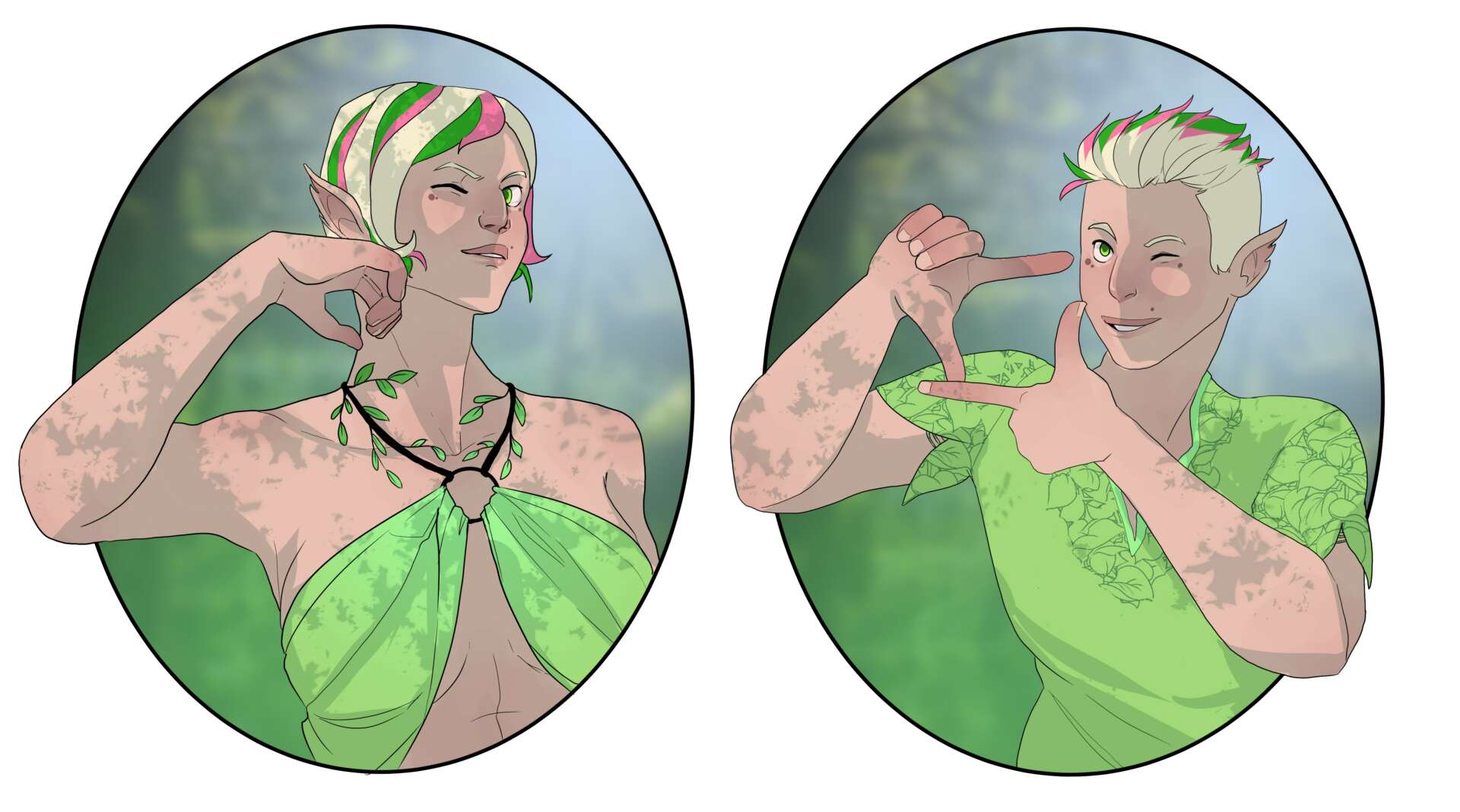
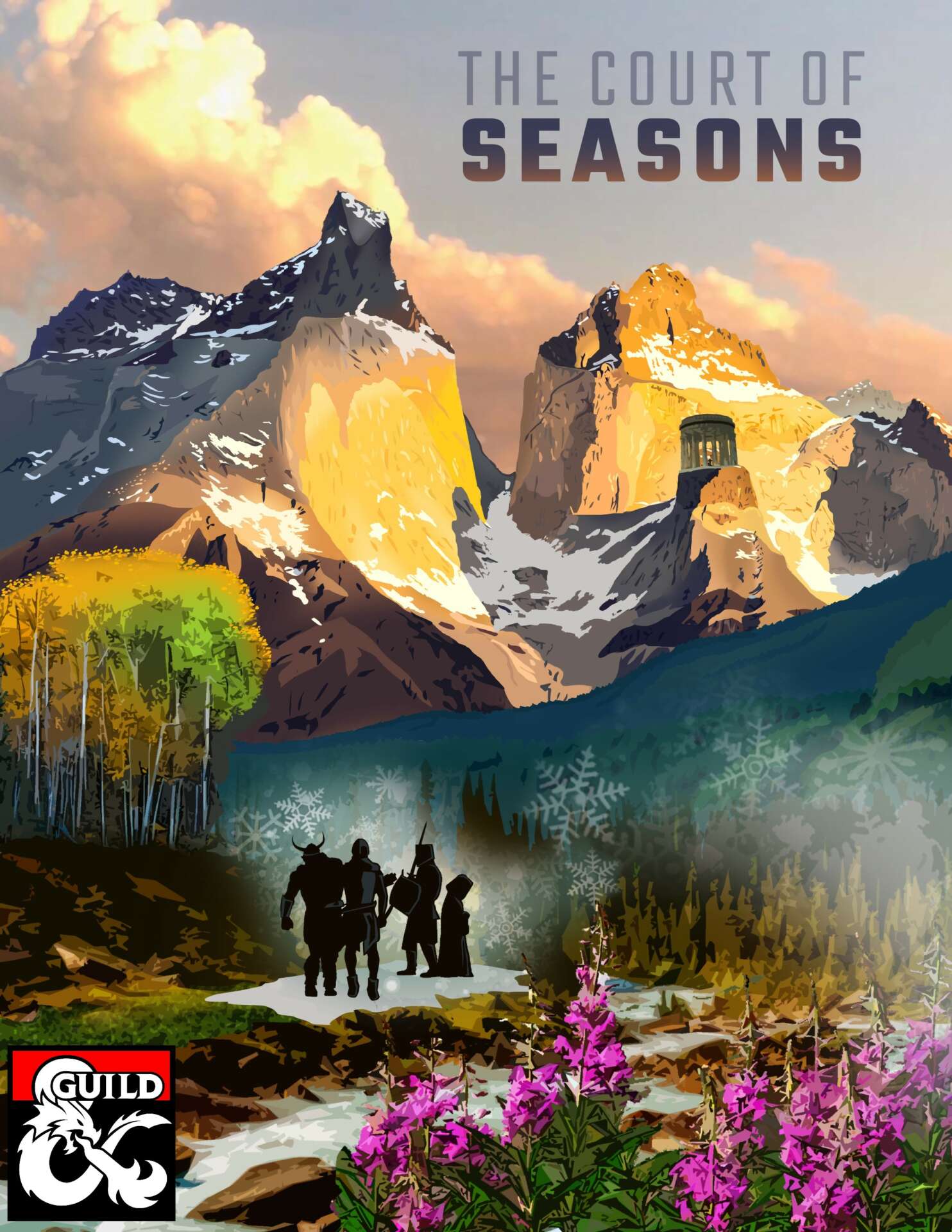
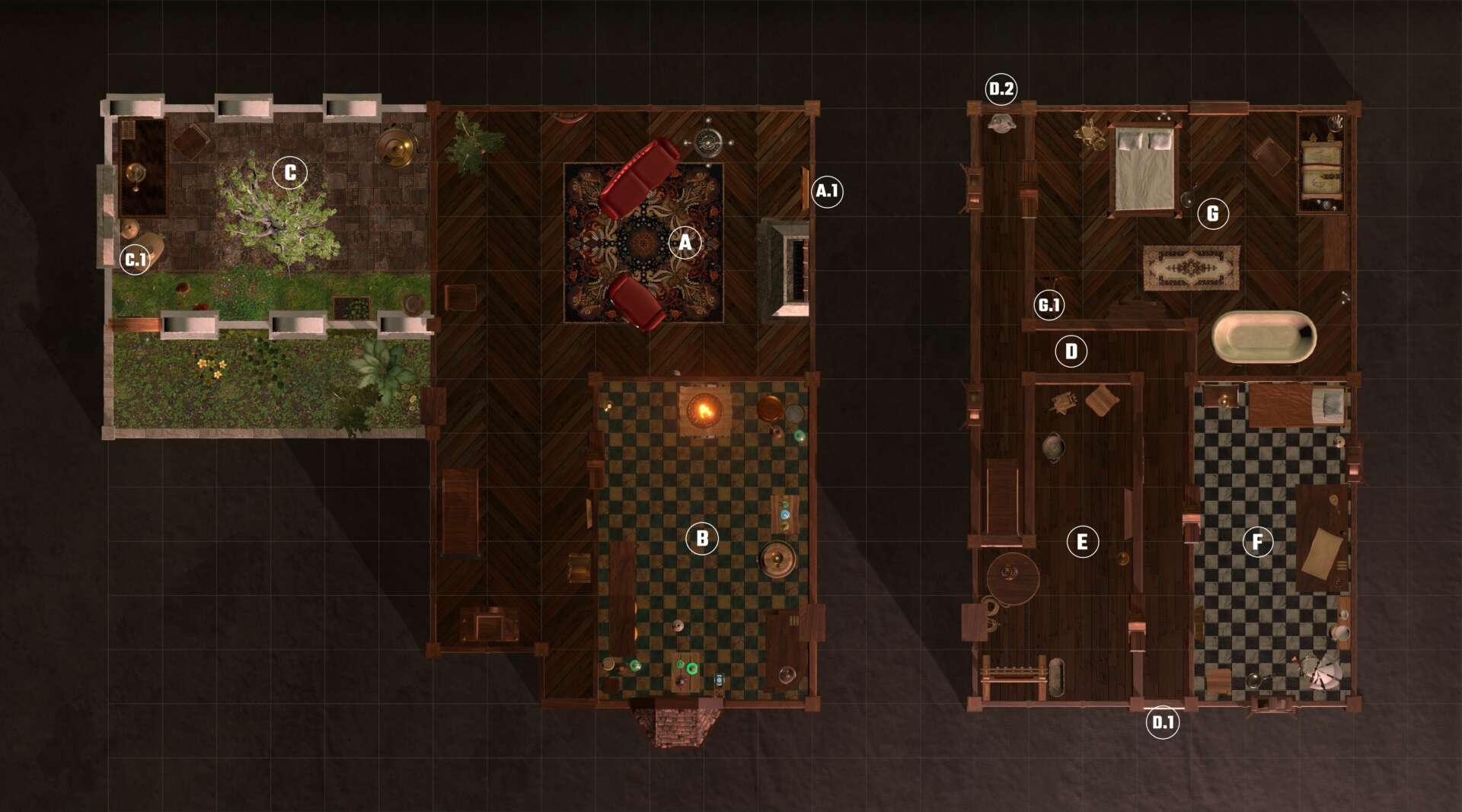
Alright – so here’s a fun one. What do you think about NFTs?
I feel particularly qualified to answer this question since I’m both a professional creative and software engineer. The vast majority of my schooling and professional education has been in the computer science field. My first passion was programming, and that part of my brain still finds joy in game design and writing. They give me an incredible creative outlet that also has plenty of math and crunchy engineering thought processes baked in. This duality lets me see NFTs and blockchain technology from both sides: the ideological, technological pursuit; and the practical impact it has on creatives.
NFTs are interesting. Trying to solve the notion of “digital ownership” in a deeply fractured, disparate marketplace sounds great on paper. Truly owning a piece of digital media, be that a work of art or a cosmetic item in a video game, and then freely trading that item without being bound to any one digital marketplace could be a great boon for consumers.
However, I think there are two major problems with NFTs that call their efficacy into question.
First there’s a legitimate concern about what digital ownership should mean and, even once that’s decided, getting buy-in from all the various platforms that would enable a good use-case for them. For example, I’d love to see Blizzard and Riot come together with a dozen other video game companies and say “You can now buy and sell cosmetic items you unlock in our games using a digital marketplace that none of us control.” That’s a compelling and interesting use case for tokens to represent digital ownership and enable trade of those digital items. But to my knowledge none of those companies are actually interested in doing that. Riot wants you to buy your League of Legends skins solely from Riot. Ditto for Blizzard and its suite of collectible game assets. I doubt we’ll see the day when I could trade my Izzet deck on MTG: Arena for a max level Warrior on World of Warcraft. Until a day comes when these companies actually want and agree to using block chain technology to enable that digital marketplace, NFTs are a solution looking for a problem.
Second, and more concerningly, there’s one area where NFTs have taken hold in the worst way possible. Digital art is rife with exploitation by bad actors minting NFTs for artwork that they don’t own and have no right to be selling. I work with plenty of artists to create assets for our content, and none of them have mentioned NFTs in a positive light. Most speak of them with disdain. Even when an NFT isn’t committing outright art theft, it’s essentially a questionably ethical trading card with no other purpose except to say you own something. The amount of processing time (and, by extension, electric power) it takes to maintain blockchain transactions has raised ample complaints from energy advocates. So if artists think they are bad, environmentalists think they are bad, and there’s evidence money spent on them is used for shady (if not criminal) activity, then what ethical purpose are they serving? None, I’d say.
NFTs and blockchain technology in general represent truly novel ways that marketplaces could evolve in the coming decades. But these technologies are stymied by bad actors and unethical practices. Until those deeper questions of purpose and implementation can be answered ethically, I don’t see a place for them in a creative’s suite of tools.
Contact Info:
- Website: https://www.day20.org/
- Instagram: https://www.instagram.com/day20_game/
- Facebook: https://www.facebook.com/Day20game
- Twitter: https://twitter.com/Day20_game
- Other: My personal Twitter is @krasiph, which is where I post my own views separate from my lead-design work at Day 20.
Image Credits
Vehr_Combined.png = C. E. Chant, a.k.a. “Hades” CourtOfSeasons_dmsguild.jpg = Julie Leidel HoustOfTooManyMiseries_GmMap.jpg = Dungeon Alchemist


